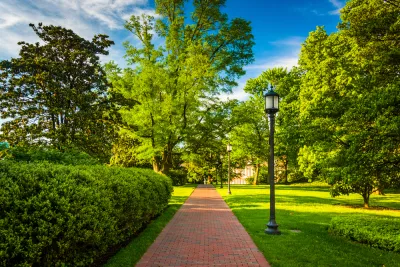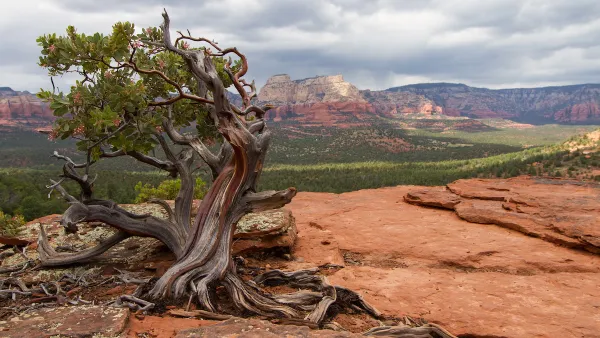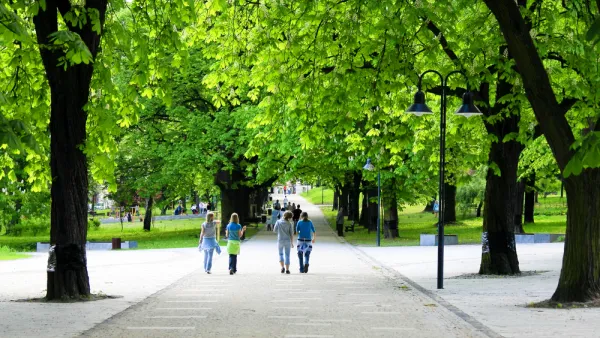A movement to plant small patches of plants in urban neighborhoods is taking off in Europe and Asia as cities work to mitigate the effects of climate change and provide increased access to green space.

The newest trend in urban forestry: micro-forests. The tiny, neighborhood-scale patches of native trees are proliferating in cities around the world, writes Elizabeth Hewitt in National Geographic. In the 1970s, Japanese botanist Akira Miyawaki "pioneered a method of planting young indigenous species close together to quickly regenerate forests on degraded land."
Now, "[i]n Europe, India, and other countries, communities are creating small-footprint, native forests as hyperlocal responses to large-scale environmental challenges." In the Netherlands, IVN Nature Education has led an effort to plant 144 "tiny forests" to date. "Public projects, which IVN coordinates with a local school, community members and a municipality, usually range between 200 and 250 square meters—roughly equivalent to a tennis court."
The project also encourages private backyard forests, which can be as small as six square meters. "Daan Bleichrodt, who launched IVN’s Tiny Forest initiative with the goal of making nature more accessible to children, said he thinks they are popular because people are becoming more aware of major environmental challenges." And while "tiny plots of trees alone will not solve climate change," "[p]reliminary carbon sequestration data shows that the Tiny Forest planting method is on par with other forms of reforestation in the Netherlands. Wageningen researchers found, on average, that each sequestered about 127.5 kilograms of carbon in 2020."
But while nature-based solutions "can’t substitute decarbonizing the economy," says Cécile Girardin, of Oxford University’s Nature-Based Solutions Initiative, but they can have positive impacts on things like urban cooling, water regulation, and biodiversity.
FULL STORY: Why ‘tiny forests’ are popping up in big cities

National Parks Layoffs Will Cause Communities to Lose Billions
Thousands of essential park workers were laid off this week, just before the busy spring break season.

Retro-silient?: America’s First “Eco-burb,” The Woodlands Turns 50
A master-planned community north of Houston offers lessons on green infrastructure and resilient design, but falls short of its founder’s lofty affordability and walkability goals.

Delivering for America Plan Will Downgrade Mail Service in at Least 49.5 Percent of Zip Codes
Republican and Democrat lawmakers criticize the plan for its disproportionate negative impact on rural communities.

Test News Post 1
This is a summary

Test News Headline 46
Test for the image on the front page.

Balancing Bombs and Butterflies: How the National Guard Protects a Rare Species
The National Guard at Fort Indiantown Gap uses GIS technology and land management strategies to balance military training with conservation efforts, ensuring the survival of the rare eastern regal fritillary butterfly.
Urban Design for Planners 1: Software Tools
This six-course series explores essential urban design concepts using open source software and equips planners with the tools they need to participate fully in the urban design process.
Planning for Universal Design
Learn the tools for implementing Universal Design in planning regulations.
EMC Planning Group, Inc.
Planetizen
Planetizen
Mpact (formerly Rail~Volution)
Great Falls Development Authority, Inc.
HUDs Office of Policy Development and Research
NYU Wagner Graduate School of Public Service




























